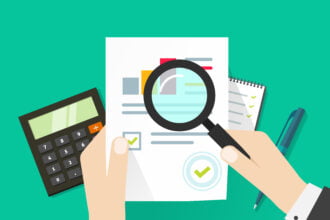This article examines the perfect combination of automated decisioning with advanced analytics and the human interaction.
Let’s start with a simple brainteaser. Take a look at this picture:
This article examines the perfect combination of automated decisioning with advanced analytics and the human interaction.
Let’s start with a simple brainteaser. Take a look at this picture:
There is a set of four cards lying on a table. Your task is to verify the rule: “If there’s a vowel written on one side of the card, then an even number is on the other side.” Identify which card(s) you need to turn to check the validity of this rule.
Most of respondents give an answer straight away: it is enough to check the other side of the card “A”. Another popular answer is: you need to turn both “A” and “2” cards.
Sure, we need to flip the “A” card, since this card has a vowel on it, and we have no data on what’s on the other side of this card. Is it really necessary to turn the “2” card? Our rule says nothing about the even numbers – therefore, we have no interest in checking this card. But this doesn’t mean that checking the “A” card is sufficient. We must flip the “7” card as well to see if the other side of this card has a vowel written on it. If it did, that would refute the rule.
This task is called “Wason selection task” and was created by Peter Wason, a leading cognitive psychologist. According to his experiments, four out of five respondents fail to solve this puzzle correctly. Cognitive psychologists have found that people are wary of speculating on factors with high level of ambiguity; they prefer to base their decisions only on known facts. In other words, they tend to lose out of sight uncertain information.
But sound and insightful decision making is impossible without the information that is “hidden” in the data. Paul Rogers and Jenny Davis-Peccoud at Bain & Company have comprised a list of 10 Decision Diseases That Plague Companies, and this rating is topped by a lack of relevant insights or, as they call it, Blurred vision.
Below we’d like to provide just a few examples of how predictive analytics and decision automation paltforms can enhance decisioning in various areas.
Embedding scorecards and advanced analytical models into loan origination systems allows lenders to acquire most reliable and profitable accounts, render the optimal decisions for loan pricing, and capture cross-sell opportunities. This way, forward thinking lenders can reduce costs of customer acquisition campaigns, improve their loan portfolio and overall profitability.
Marketers can leverage decision automation platforms to design, test and implement customer lifecycle management activities and marketing campaigns. With sophisticated data analytics and behavioral scorecards, they can identify white spaces in the market and gain information advantage over their competitors. Furthermore, marketing automation solutions enable them to monitor performance of the product and services across different target groups, and keep their focus on changing customer demands.
Decision automation technologies streamline business flow and allow companies of all sizes to embed intelligence into their daily operations. Smart market players who can leverage predictive analytics to optimize their decisioning and risk management will step beyond accessing relevant insights: they will be able to automatically transform the information into profitable actions.









